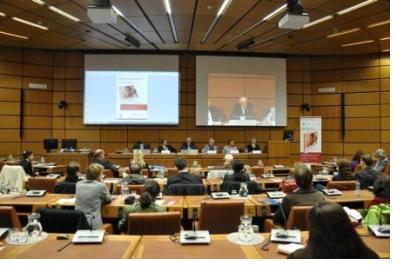The 2013 edition of the World Disasters Report, with a focus on technology and the future of humanitarian action, was launched on 30 October 2013 at the Vienna International Centre. The launch was organised by the United Nations Office for Outer Space Affairs (UNOOSA), together with the International Federation of Red Cross and Red Crescent Societies (IFRC), Embassy of Norway in Vienna and the Austrian Red Cross.
This year's edition of the World Disasters Report highlights how the responsible use of technology offers concrete ways to make humanitarian assistance more effective, efficient and accountable. The Report details how humanitarians are employing technology in new and creative ways and what risks and opportunities may emerge as a result of technological advancements. The Report is proposing new information and communication technology tools for humanitarian action that can detect needs earlier and predict crises better, enabling better response and increasing accountability and transparency.
Speakers at the event highlighted the key findings of the report and how governments, humanitarian actors, private sector and academia are currently using and advancing technology to address global problems.
The World Disasters Report, which has been published annually since 1993, brings together the latest trends, facts and analysis of contemporary catastrophes and their effect on vulnerable populations worldwide. A live streaming of the event was broadcast on the UN-SPIDER Knowledge Portal.
Photos of the event are available on flickr.
Watch the launch web stream including all presentations:
| Attachment | Tamaño |
|---|---|
| Andreas Papp (MSF): GIS and satellite remote sensing to support humanitarian action (4.36 MB) | 4.36 MB |
| Markus Woltran (UN-SPIDER): The UN-SPIDER Programme (2.08 MB) | 2.08 MB |
| Christophe Bois (iMMAP): How Mobile Technology helps Humanitarian Operations (2.64 MB) | 2.64 MB |
| Partick Vinck (IFRC): World Disasters Report 0213 (1017.34 KB) | 1017.34 KB |

